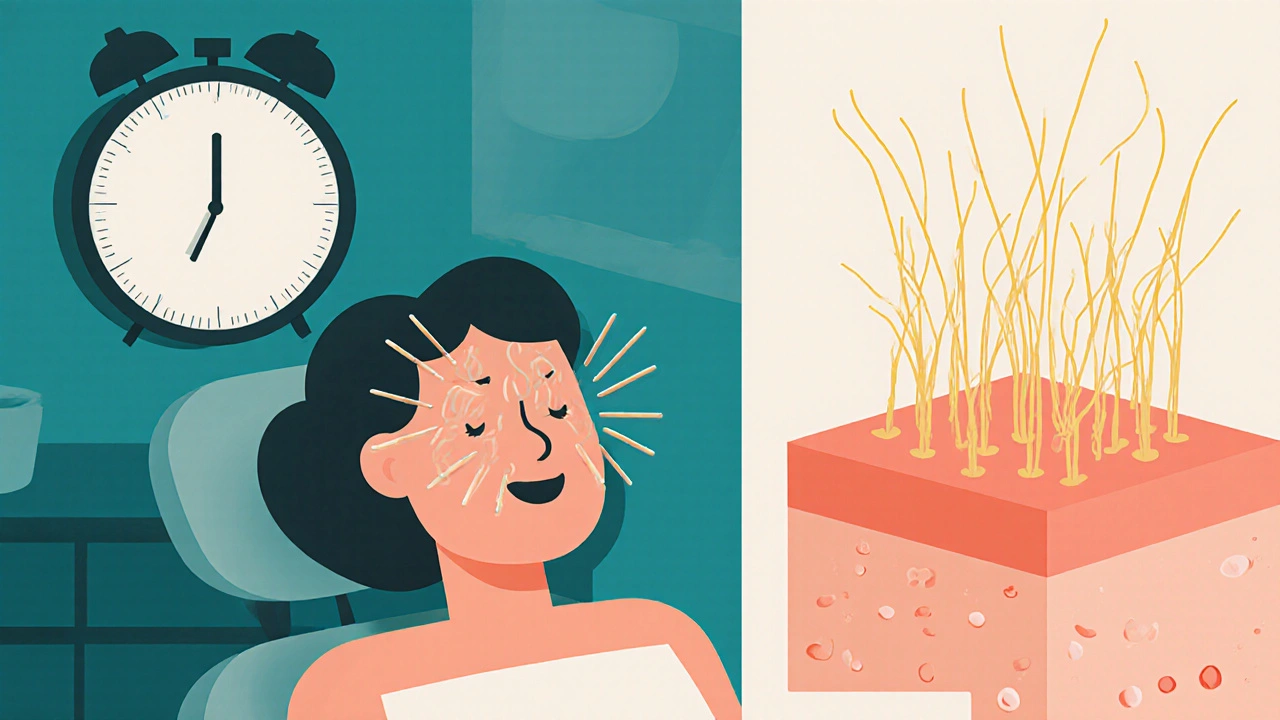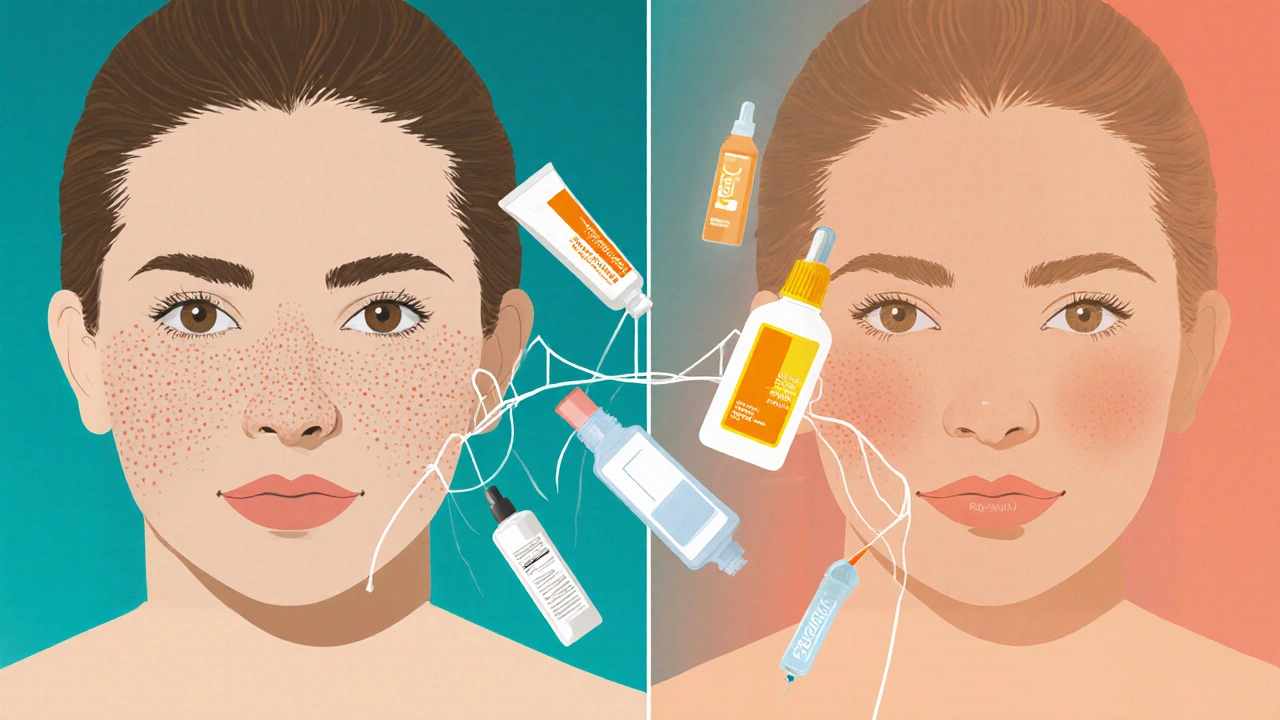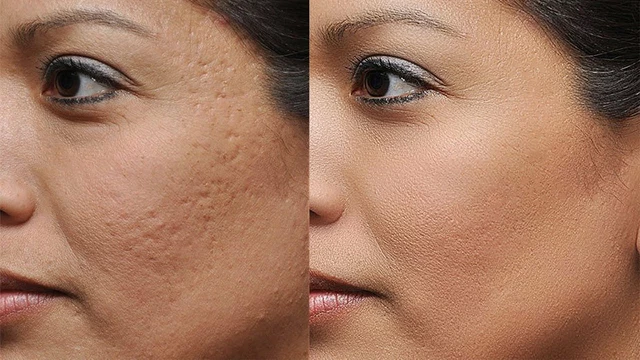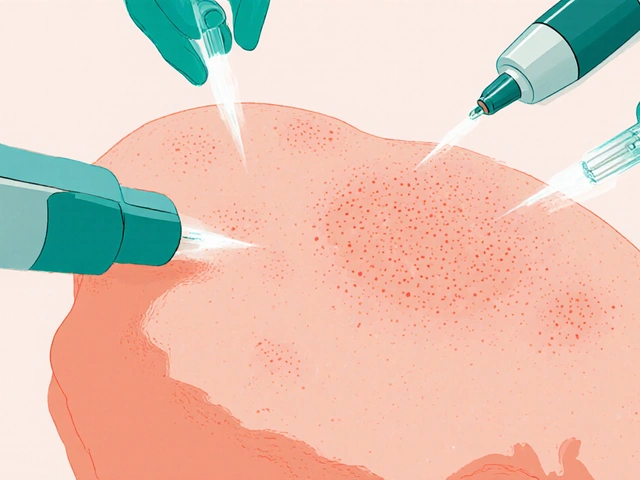Acne scars don’t go away on their own. If you’ve had severe breakouts, you’ve probably noticed those pitted, raised, or uneven patches on your skin that makeup can’t hide. They’re not just blemishes-they’re permanent changes in your skin’s structure. About 95% of people who’ve had inflammatory acne end up with some kind of scarring, according to the American Academy of Dermatology. The good news? You’re not stuck with them. Today’s treatments can dramatically improve texture, tone, and confidence-but only if you know which options match your scar type, skin tone, and lifestyle.
Understanding Your Scar Type Matters More Than You Think
Not all acne scars are the same. Treating them like they are is the biggest mistake people make. There are three main types of atrophic scars (the most common kind), and each responds differently:- Rolling scars look like gentle waves under the skin. They’re caused by fibrous bands pulling the dermis down. These respond best to both lasers and microneedling because they’re wide and shallow.
- Boxcar scars have sharp edges and look like deep pores or craters. They’re more stubborn than rolling scars but still improve significantly with the right treatment.
- Ice pick scars are narrow, deep pits that look like puncture wounds. These are the hardest to treat. Neither lasers nor microneedling can fully erase them-but they can soften their appearance.
Up to 80-90% of acne scars fall into the atrophic category. The rest are raised (hypertrophic or keloid), which need completely different approaches. If you don’t know what you’re dealing with, you’re guessing-and wasting time and money.
Microneedling: The Gentle Powerhouse
Microneedling isn’t just a spa trend. It’s a medically proven way to trigger your skin’s natural healing response. Tiny needles create controlled micro-injuries, which tell your body to rebuild collagen and elastin. The result? Smoother, tighter skin over time.Standard microneedling uses needles between 0.25mm and 3.0mm deep. For acne scars, most dermatologists use 1.5mm to 2.5mm with 2-3 passes per session. But the real game-changer is radiofrequency (RF) microneedling. Devices like Morpheus8 combine needles with radiofrequency energy delivered directly into the dermis. This heats the tissue from within, boosting collagen remodeling even more.
Here’s what to expect:
- Each session lasts about 30-45 minutes, including numbing cream.
- You’ll need 3 to 6 sessions, spaced 4 to 6 weeks apart.
- Downtime? Usually 24 to 48 hours of redness and mild swelling.
- Most patients report 50-70% improvement after a full course.
RF microneedling is especially popular for darker skin tones (Fitzpatrick IV-VI). Lasers carry a higher risk of post-inflammatory hyperpigmentation (dark spots) in these skin types. Microneedling? Only 5-8% risk. That’s why it’s become the go-to for many dermatologists treating diverse populations.
Laser Treatments: Faster, But With Trade-Offs
Lasers work by removing or heating layers of skin to stimulate regeneration. The type of laser determines how aggressive it is:- Fractional CO2 (10,600 nm): Ablative. Removes thin layers of skin. Most effective for deep scars, but requires 7-14 days of recovery.
- Fractional Er:YAG (2940 nm): Less invasive than CO2. Good for moderate scarring. Downtime: 5-7 days.
- Non-ablative 1,540 nm (Fraxel): Heats tissue without removing skin. Best for mild scarring and pigment issues. Downtime: 3-5 days.
A 2023 study in the Journal of Cosmetic Dermatology compared ablative CO2 laser and RF microneedling in 15 patients. Both improved skin texture equally-but CO2 produced stronger scar reduction. The catch? CO2 caused significantly more redness, peeling, and skin sensitivity in the first week.
Real-world results back this up. On RealSelf.com, 92% of people who got fractional CO2 laser say it was “worth it.” But 65% also say their downtime was “moderate to severe.” One patient reported 70% scar reduction after one treatment-but took 10 days to heal.
For ice pick scars? Lasers don’t work well either. But for rolling and boxcar scars, especially in lighter skin tones, lasers still lead in dramatic results.

Topical Strategies: The Secret Weapon
Most people think lasers and microneedling are the stars. But the real MVP? Your daily skincare routine.Studies show that using prescription tretinoin 0.05% for 12 weeks before treatment increases results by 22%. Why? It thickens the epidermis, improves cell turnover, and preps your skin to heal better after procedures.
After treatment, silicone gel is your best friend. Applied daily for 8-12 weeks, it reduces redness and cuts hyperpigmentation risk by 35%. It’s cheap, simple, and backed by decades of research.
Newer products like Skinbetter Science’s AlphaRet Scar Correcting Treatment combine retinaldehyde (a gentler form of retinoid) with growth factors. In independent tests, it delivered 30% scar improvement in just 12 weeks-without any devices.
Don’t skip sunscreen. UV exposure darkens scars and slows healing. Use SPF 50+ daily, even on cloudy days. For 8-12 weeks after any procedure, sun exposure can undo your progress.
Combination Therapy: The New Gold Standard
The smartest approach isn’t choosing one treatment-it’s combining them.Leading dermatologists now recommend starting with RF microneedling (3-4 sessions) to gently remodel scar tissue. Then, after a few months, add one or two laser sessions to polish the results. This reduces downtime, lowers risks, and improves outcomes.
Creo Clinic’s protocol-3 Morpheus8 sessions followed by 2 Er:YAG laser treatments over 9 months-achieved an average 78% scar reduction across 120 patients. That’s better than either treatment alone.
Why does this work? Microneedling builds the foundation. Lasers refine the surface. Topicals keep everything on track.
What Doesn’t Work (And Why People Get Frustrated)
Many people try home devices, chemical peels, or DIY rollers. These rarely touch deep scars. Ice pick scars won’t vanish with a $50 Amazon gadget. Over-the-counter retinols won’t fix structural damage.Another common mistake? Expecting results after one session. Acne scar repair takes time. Collagen rebuilds slowly. Most people need multiple sessions over months.
And then there’s the cost. Lasers can run $800-$1,500 per session. RF microneedling is $600-$1,200. Topicals? $30-$80 a month. It adds up. But skipping the right treatment leads to lifelong regret.
Don’t fall for “one-and-done” promises. Real results take patience, consistency, and professional guidance.

Who Gets the Best Results?
Your skin type, scar severity, and expectations determine your outcome.- Best candidates for microneedling: Mild to moderate scars, darker skin tones, people who can’t afford long downtime, budget-conscious patients.
- Best candidates for lasers: Moderate to severe rolling or boxcar scars, lighter skin tones, those willing to accept longer recovery for faster results.
- Best candidates for combination therapy: Anyone with multiple scar types, those who’ve tried one method without success, people seeking the highest possible improvement.
And if you have ice pick scars? Don’t give up. While they’re the toughest, even they can improve by 30-35% with a smart combo of RF microneedling, subcision, and topical care.
What to Ask Your Dermatologist
Before you commit, make sure you’re getting the full picture:- “What type of scars do I have?”
- “Which treatment do you recommend first-and why?”
- “How many sessions will I need? What’s the total cost?”
- “What’s your experience with this device on patients like me?”
- “What’s your post-care protocol?”
A good provider will show you before-and-after photos of patients with your skin tone and scar type. If they can’t, walk away.
Can acne scars be completely removed?
No, acne scars can’t be completely erased-they’re permanent changes in skin structure. But with modern treatments, most people achieve 50-85% improvement. The goal isn’t perfection-it’s noticeable, confidence-boosting improvement.
How long do results last?
Results from microneedling and lasers are long-lasting because they stimulate your body’s own collagen. Once new collagen forms, it stays. But skin continues to age, so maintenance treatments every 1-2 years help preserve results. Topical care (like tretinoin and sunscreen) is essential to keep skin healthy long-term.
Is microneedling better than lasers for dark skin?
Yes, for most people with Fitzpatrick skin types IV-VI. Lasers carry a higher risk of post-inflammatory hyperpigmentation (dark spots), which can last months. RF microneedling delivers energy deep into the skin without affecting surface pigment, making it safer and more predictable for darker tones.
Can I do microneedling at home?
Home rollers (under 0.5mm) only affect the top layer of skin. They won’t reach the dermis where scars form. For real scar improvement, you need professional devices with needle depths of 1.5mm or more-and often RF energy. DIY tools are ineffective and can cause infection or more scarring if not sterilized properly.
How soon after acne clears can I start treatment?
Wait until your active acne is fully under control-usually 4 to 6 weeks after your last breakout. Treating scars while you’re still breaking out can worsen inflammation and lead to more scarring. Some studies show that starting tretinoin within 2 weeks of clearing acne can reduce scarring by 55%.
Final Thoughts: Choose Smart, Not Just Fast
There’s no single best treatment for acne scars. The right path depends on your scars, your skin, your budget, and your tolerance for downtime. Microneedling is safer and gentler. Lasers are more powerful. Topicals are essential. And combining them? That’s where the best results happen.If you’ve been waiting for your scars to fade on their own-stop. The science is clear: early, targeted treatment works. Don’t let fear of pain or cost hold you back. Talk to a board-certified dermatologist. Get a proper diagnosis. Build a plan. Your future self will thank you.




Asha Jijen
November 27, 2025 at 05:49So microneedling works but lasers don’t help ice pick scars huh
Aishwarya Sivaraj
November 28, 2025 at 14:40I’ve been doing RF microneedling for 6 months now and honestly it’s been life changing. I had deep boxcar scars from teenage acne and after 4 sessions my skin looks like it has a filter on 24/7. No makeup needed. Tretinoin before and silicone gel after made all the difference. Just don’t expect miracles in a week. Collagen takes time. And yes sunscreen is non negotiable. I forgot once and my scars got darker for two months. Don’t be me.
Kaleigh Scroger
November 29, 2025 at 07:22People keep saying lasers are better for light skin but they don’t mention how brutal the recovery is. I did fractional CO2 and thought I was tough but I cried in the shower for three days. My face looked like a boiled lobster. The results were good but the cost wasn’t just financial. It was emotional. RF microneedling gave me 60% improvement with zero drama. If you’re on the fence go microneedling first. Save the lasers for the polish job.
Elizabeth Choi
November 29, 2025 at 23:40Let’s be real most of these treatments are just expensive placebos. I had a dermatologist sell me a $4k package then told me to use Neutrogena on the side. The only thing that actually helped was time and not picking. Everything else is marketing. People want magic solutions so they pay for it. Your skin will heal eventually if you stop abusing it.
Allison Turner
December 1, 2025 at 03:05Ugh another post pretending acne scars are some deep trauma. You had bad skin as a teen now you want to spend thousands to fix it. Grow up. Your scars tell a story. They’re not flaws they’re badges. Stop chasing perfection. The real problem isn’t your skin it’s your mindset.
Darrel Smith
December 2, 2025 at 19:51I’m a man and I got microneedling and I don’t care who knows it. My wife said I looked younger and my coworkers asked if I got a facial. I told them I did and they didn’t judge. This isn’t a girly thing. It’s science. If you’re too proud to fix your skin you’re the one with the problem. I spent 2 years hiding behind beards and now I go barefaced and I feel like I finally won. Stop being weak.
Jebari Lewis
December 4, 2025 at 09:47As someone who has studied dermatological biology for over a decade I must emphasize that the foundational principle here is collagen remodeling through controlled injury. The efficacy of RF microneedling lies not in the needles but in the precise thermal delivery to the reticular dermis. The 2023 JCD study you referenced demonstrated comparable outcomes but with significantly lower epidermal disruption. This is why the combination protocol is superior. Furthermore the use of topical retinaldehyde activates RAR-beta receptors which synergistically enhance fibroblast proliferation. Do not underestimate the role of photoprotection. UV-A exposure degrades newly synthesized collagen via MMP-1 upregulation. Your sunscreen is not optional it is the cornerstone of maintenance.
Emma louise
December 5, 2025 at 20:24Wow so if you’re brown you can’t get lasers? That’s just racism disguised as science. I’m white and I got a chemical peel and my scars are gone. Why do you people always make everything about skin tone? Just do what works. Also why are we treating acne scars like they’re a medical emergency? It’s not cancer.
Lauren Zableckis
December 6, 2025 at 21:42I’ve tried everything. Lasers microneedling topicals. The only thing that made me feel like myself again was therapy. Not the skin stuff the real kind. I spent years believing my worth was tied to how smooth my face looked. Turns out I was just lonely. My scars are still there but I don’t hate them anymore. Maybe that’s the real treatment.
sharicka holloway
December 7, 2025 at 19:46For anyone thinking about this: start with tretinoin. Just the cream. Not the laser. Not the device. Just the cream. Use it every night for 3 months. Then reevaluate. I did this and my scars softened so much I didn’t need anything else. And yes sunscreen. Every. Single. Day. Even when you’re inside. Even when it’s cloudy. Even when you’re mad at the world. Just put it on.
Alex Hess
December 9, 2025 at 10:14Typical influencer advice. Microneedling? Lasers? Please. My cousin did all this and spent $12k and still looks like a potato. Real people don’t do this. We just wear foundation and move on. This whole post feels like a scam to sell devices to insecure people.